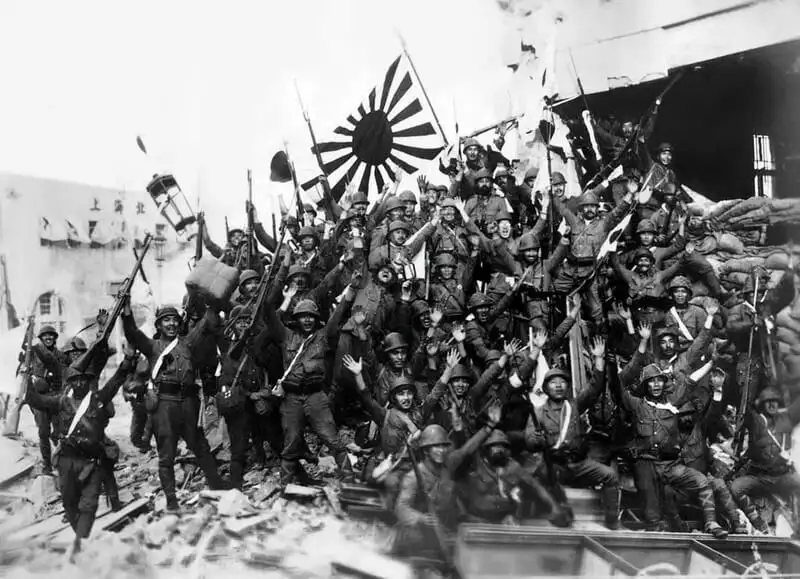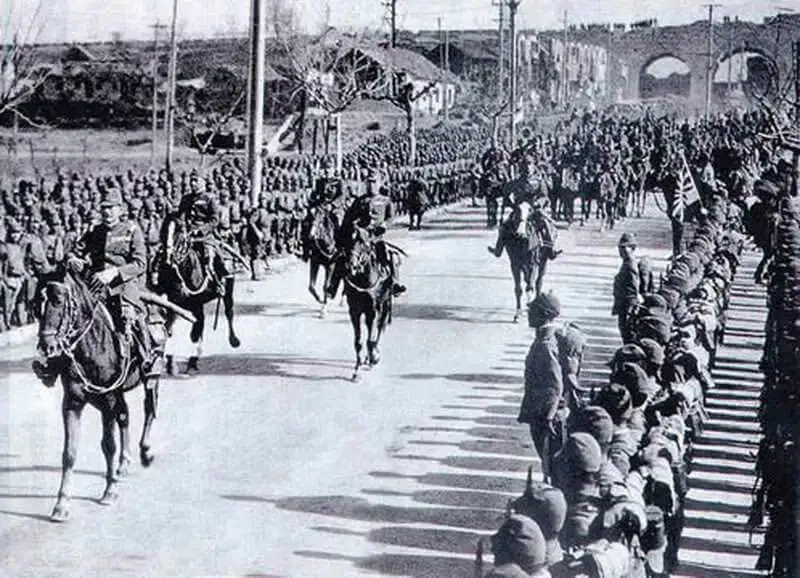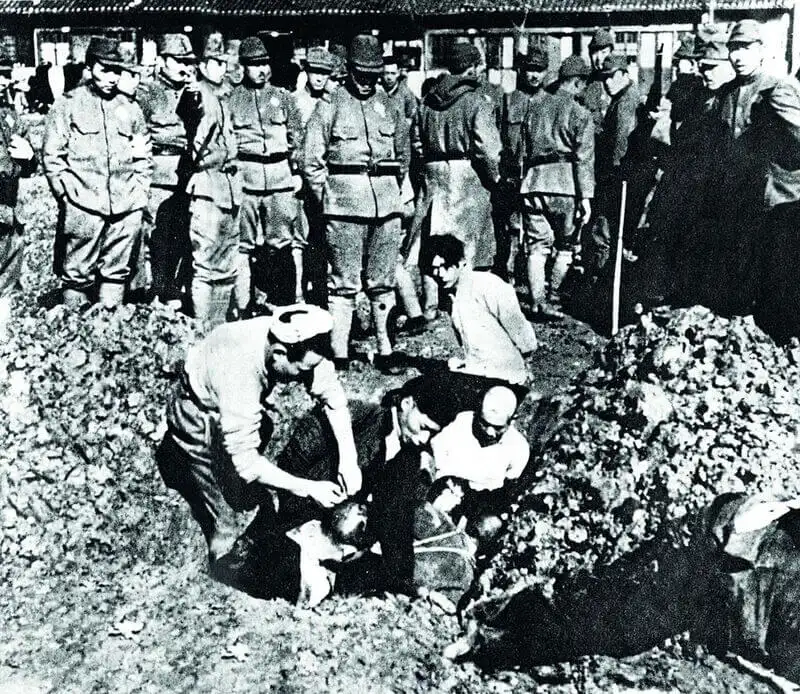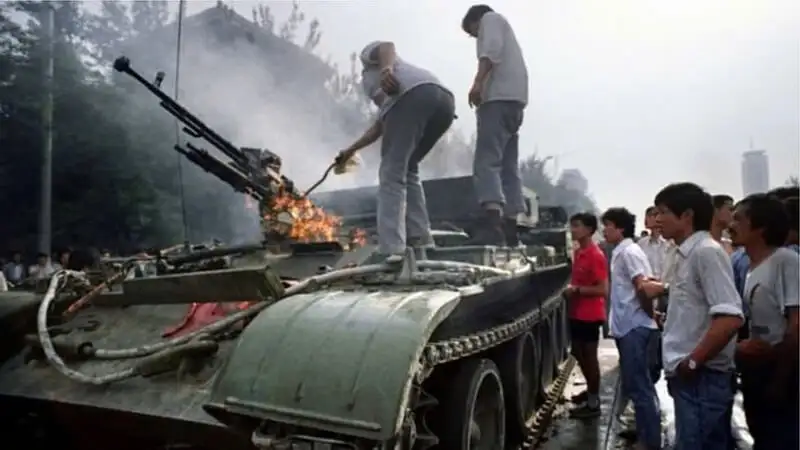In late 1937, over the course of six weeks, the Japanese military slaughtered hundreds of thousands of people and assaulted tens of thousands of women in Nanjing, China. This event, known as the Nanjing Massacre, devastated the capital of Nationalist China, leaving a horrific legacy that lingered for decades. Through this article, Pywar aims to provide a deep insight into this brutal war crime.
Preparations for the Invasion
In the early years of World War II, following a bloody victory in Shanghai during the Second Sino-Japanese War, Japan turned its attention to the capital city of Nanjing.
Fearing the loss of his forces in battle, Nationalist Chinese leader Chiang Kai-shek ordered the withdrawal of nearly all regular troops from the city, leaving only untrained militia to defend Nanjing.
Chiang also demanded that the city be held at all costs and prohibited an official evacuation of civilians. Nevertheless, many ignored the order and fled, while those who remained were left defenseless against the advancing army.

- Japanese forces entered Nanjing in 1937, initiating the Nanjing Massacre with brutal war crimes. (Source: Collected)
Did You Know? Once one of China’s wealthiest and most industrially advanced cities, Nanjing took decades to recover from the tragedy of the Nanjing Massacre. The capital was abandoned in 1949 in favor of Beijing but later developed into a modern industrial hub during the communist era. Today, it hosts the headquarters of some of China’s largest state-owned corporations.
A small group of Western businessmen and missionaries, known as the International Committee for the Nanjing Safety Zone, attempted to establish a neutral area within the city to protect civilians. This safety zone, opened in November 1937, spanned an area comparable to New York’s Central Park and included more than a dozen small refugee camps.
On December 1, the Chinese government withdrew from Nanjing, handing over control to the International Committee. The remaining population was ordered to relocate to the safety zone for protection.
The Japanese Devastation of Nanjing
On December 13, the first units of Japan’s Central China Area Army, commanded by General Matsui Iwane, entered Nanjing. Before their arrival, rumors of their atrocities en route—such as killings, arson, and looting—had already spread. Thousands of Chinese soldiers were hunted down, killed, and buried in mass graves.
Starving, undisciplined, and exhausted from the bloody battles in Shanghai, Japanese soldiers sought revenge for their fallen comrades. Entire families, including the elderly and children, were massacred. Tens of thousands of women, from young girls to the elderly, were raped, tortured, and brutally murdered. The bodies of victims littered the streets for months.
Determined to destroy the city, Japan looted and burned at least a third of Nanjing’s structures. Although they initially agreed to respect the Nanjing Safety Zone, even this area ultimately fell victim to the violence. In January 1938, Japan declared order restored and disbanded the safety zone, but killings continued into early February. A puppet government was established, ruling Nanjing until the end of World War II.

- Japanese troops celebrate after capturing Nanjing in 1937, marking the start of a series of bloody war crimes and devastating destruction. (Source: Collected)
> See More: Pearl Harbor, the Shame of the Pacific Fleet
Aftermath of the Nanjing Massacre
There is no official death toll for the Nanjing Massacre, but estimates range from 200,000 to 300,000 people. After the war ended, General Matsui Iwane and his deputy, Tani Hisao, were tried and convicted of war crimes by the International Military Tribunal for the Far East; both were subsequently executed.
Outrage over the Nanjing events continues to strain Sino-Japanese relations to this day. The true nature of the massacre is often debated and exploited for propaganda by historical revisionists, apologists, and Japanese nationalists. Some argue the casualty figures are exaggerated, while others deny the massacre ever occurred.
Today, victims of the Nanjing Massacre are commemorated at the Nanjing Massacre Memorial Hall, located near a mass grave known as the “Pit of Ten Thousand Corpses.” UNESCO, a United Nations agency, has included historical documents related to the massacre in its Memory of the World Register.

- The death toll from the Nanjing Massacre is estimated to range from 200,000 to 300,000 people. (Source: Collected)
Conclusion
Through this article, Pywar hopes to provide a comprehensive view of the Nanjing Massacre, one of history’s most brutal war crimes. Japan massacred hundreds of thousands and assaulted tens of thousands of women, leaving lasting pain for China and a rift in Sino-Japanese relations. Although war crime trials were held and victims are memorialized, the event remains contested by revisionist groups. Pywar hopes this piece helps readers better understand the painful lessons of the past.
Translated by: Le Tuan
Source: History.com – Nanjing Massacre






